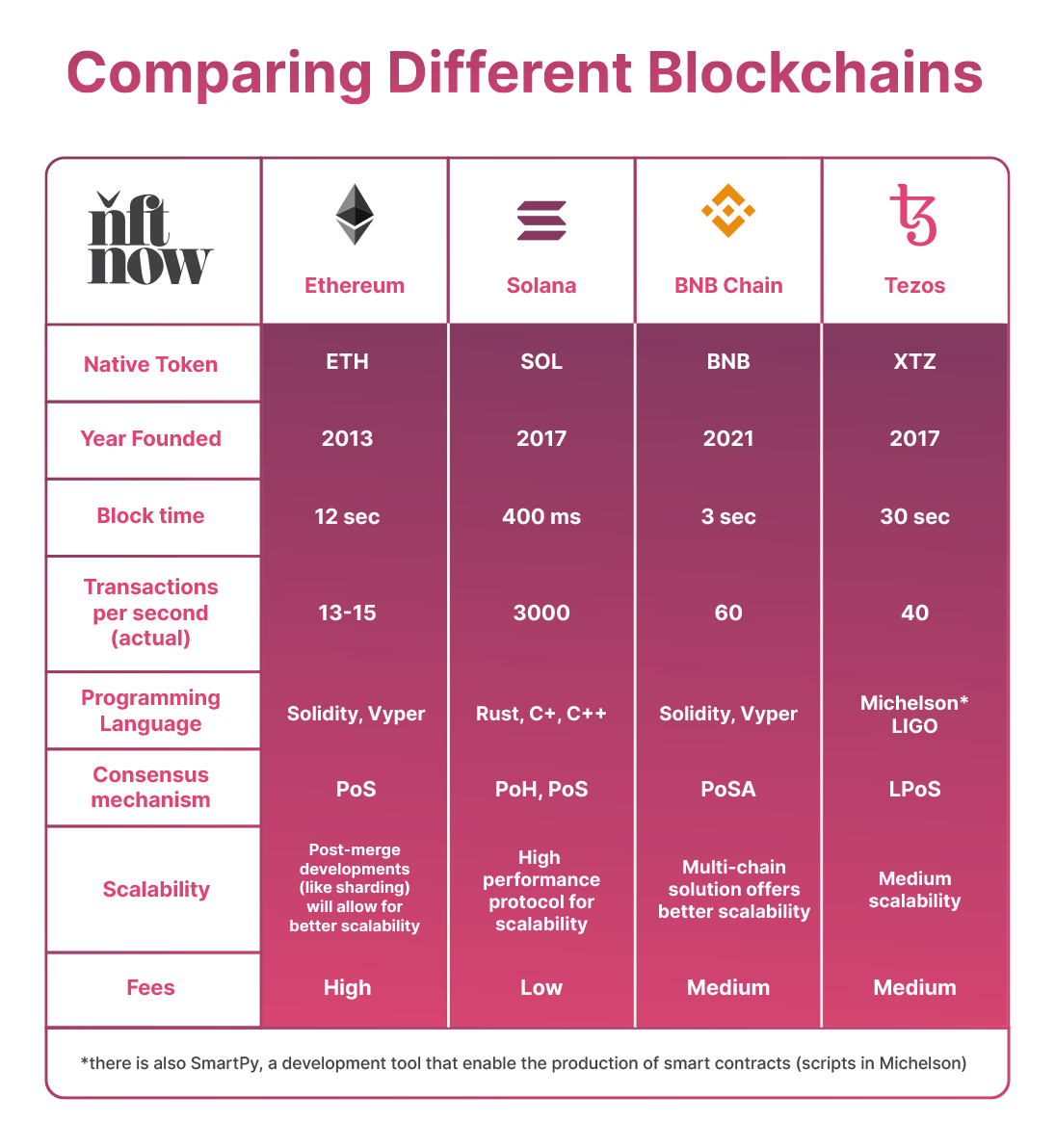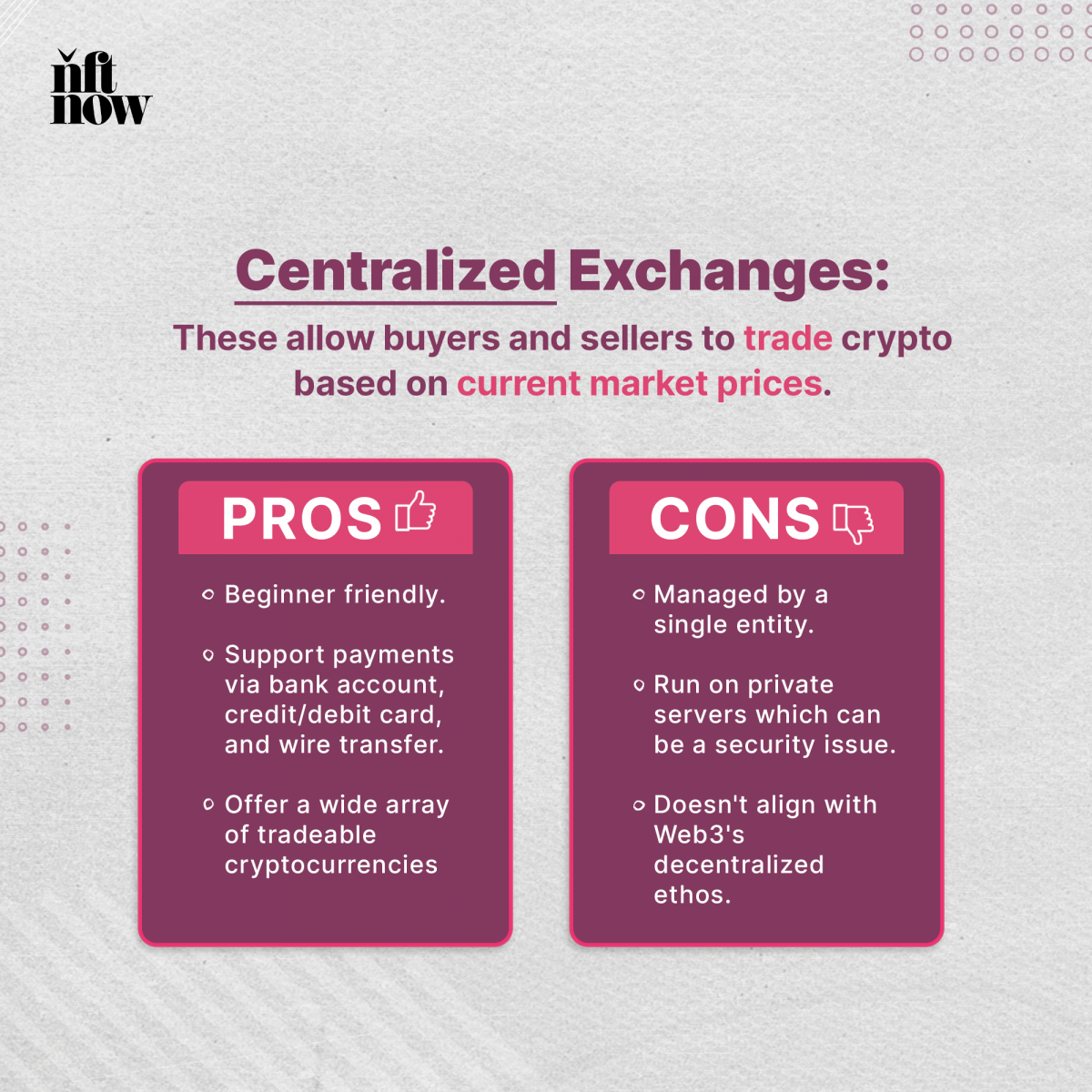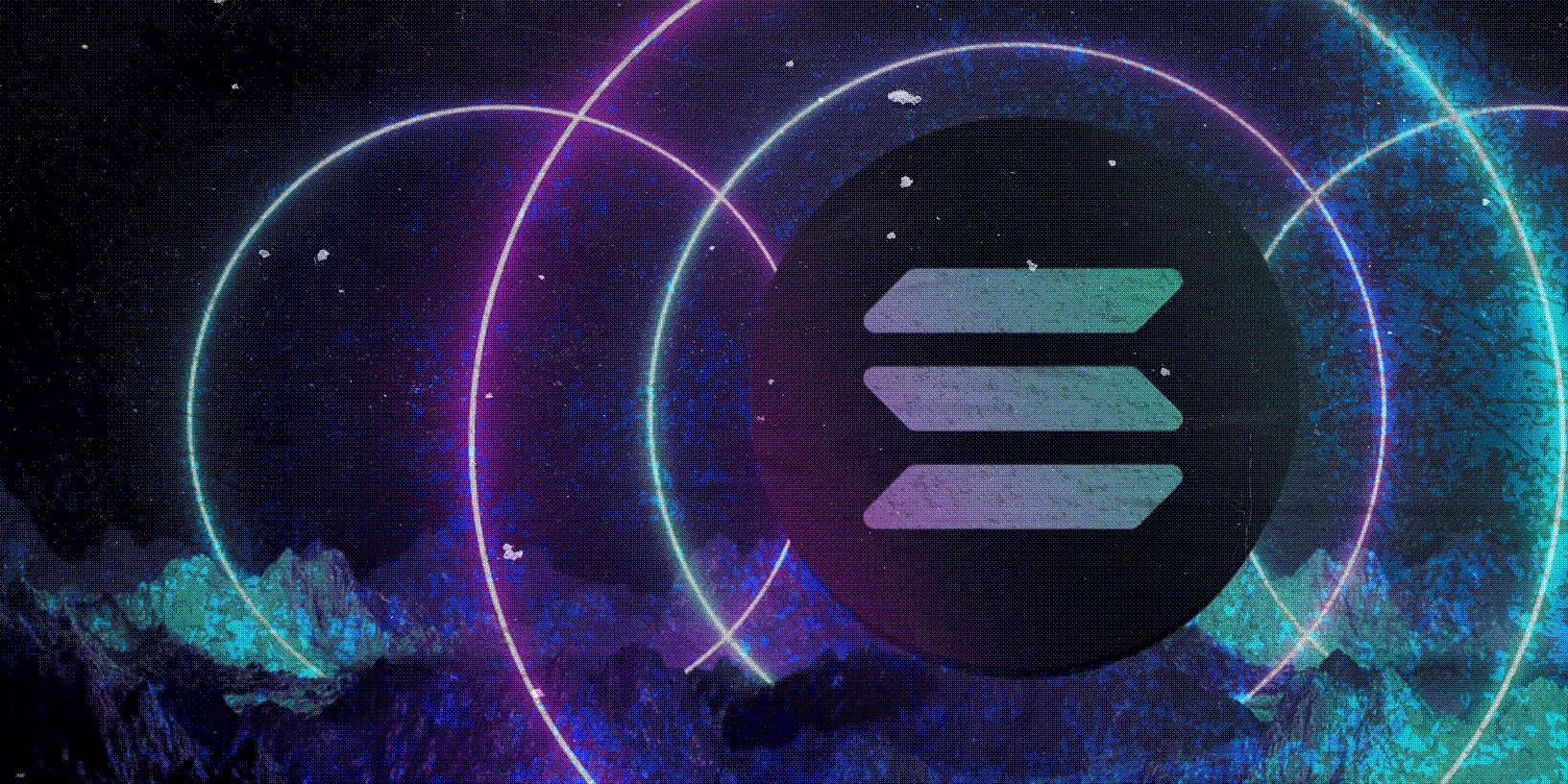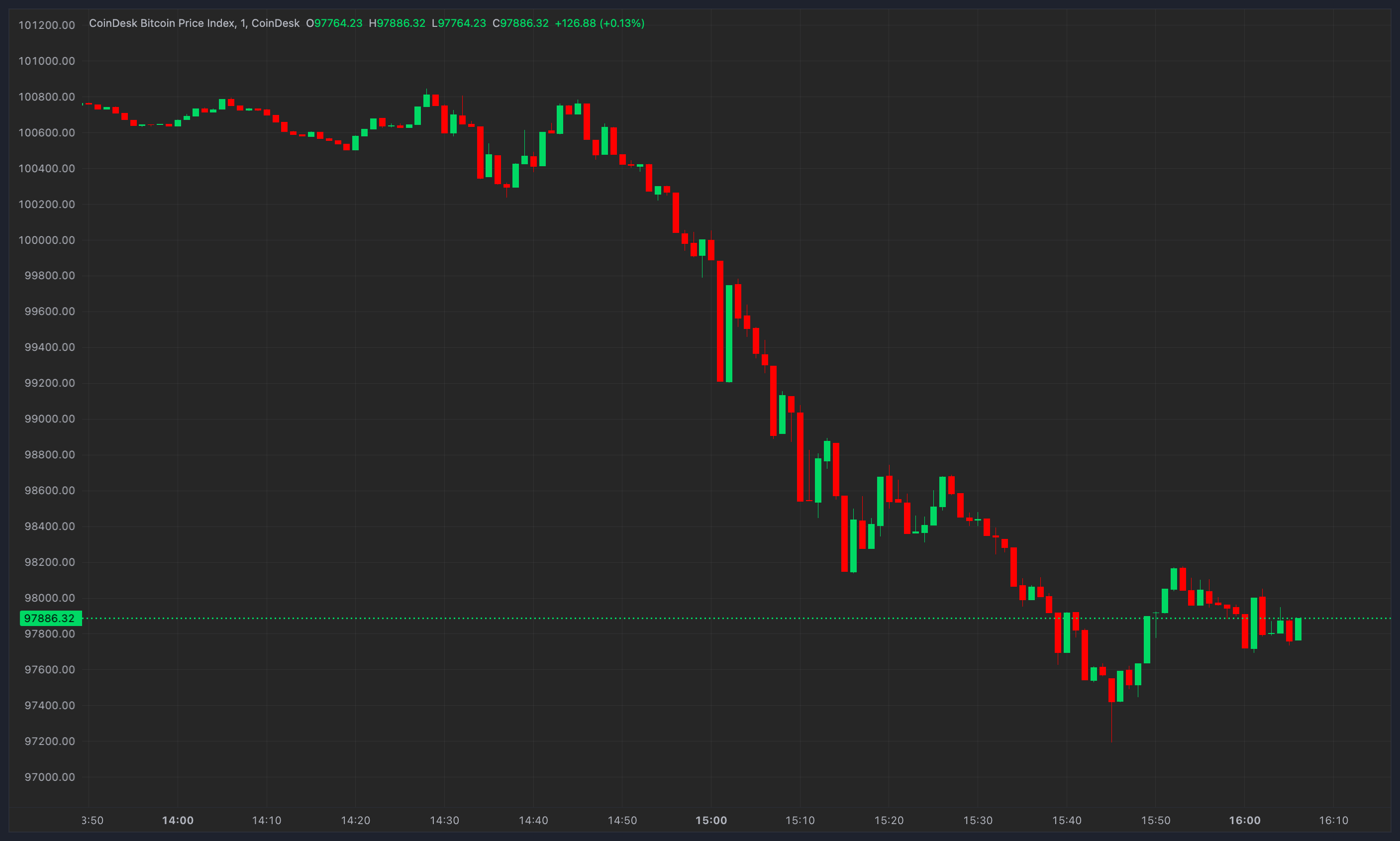Solana is already one of the world’s most popular blockchains when it comes to non-fungible tokens (NFTs) and decentralized finance (DeFi). Its native token, SOL, is currently ranked ninth in market cap among all crypto — and interest in Solana NFTs has risen rapidly throughout 2022.
Users want platforms with faster and cheaper transactions, and Solana addresses both of these demands. As a result, several leading platforms are moving to (or already do) integrate with Solana. And, as more integrations are added, users are moving to Solana at ever-increasing rates.
In this respect, Solana NFTs are one of Web3’s greatest hits so far. But, unfortunately, this doesn’t detract from how onboarding to new blockchains and NFT marketplaces remains a daunting task. But here’s the good news: we’re here to walk you through everything you need to participate in the Solana ecosystem. So get ready to become an expert on what Solana is, how it works, why there’s so much interest in Solana crypto and NFTs, and how you can make the most out of this fresh, new world.
What is Solana?
In short, Solana is a public, open-source blockchain. It was built to host a wide array of scalable decentralized applications (dApps). Like the rest of the world’s most popular blockchains, Solana supports smart contracts. This is critically important, since NFTs are minted and traded using smart contracts — they assign ownership, allow users to access digital assets in the NFT, and so on.
Solana was designed to solve the high costs and slow transaction speeds that limit the scalability of other blockchains like Ethereum and Bitcoin. When it arrived on the scene in 2017, blockchains’ processing capabilities were severely limited, and could only handle roughly 15 transactions per second (TPS). Compared to credit card companies, whose TPS range in the thousands, this was a woefully low number. Additionally, users have to pay fees for every transaction they attempt on a blockchain. When blockchain networks get congested, like during a popular NFT launch, these fees can become prohibitively expensive and soar to hundreds of dollars. Solana was created to solve both of these issues, and it did.
Solana’s TPS now surpasses Visa’s, and even rivals Mastercard’s — earning it a firm spot as an industry leader in speed and scalability. The blockchain’s transaction fees are also quite low, making the network one of the fastest-growing ecosystems in crypto. As of writing, SOL’s market cap was more than $10 billion.
How does Solana work?
Solana runs on a combination of Proof-of-Stake (PoS) and Proof-of-History (PoH) mechanisms. These algorithms contrast sharply with Proof-of-Work (PoW) mechanisms that Bitcoin and other networks use.
In short, PoW requires computers to compete with one another to solve complex puzzles to add blocks and transactions to the blockchain. These puzzles are remarkably complex and require a lot of computer power to solve, which results in astronomical amounts of energy use. Solana removes these puzzles from the equation. As a result, it doesn’t cause the same kind of environmental degradation, and its TPS performance is far higher.
If you want to see a quick comparison of Ethereum, Solana, and some of the other NFT blockchains, the following image offers a pretty good overview. Read on for a more detailed breakdown.

What is Proof-of-Stake?
In PoS, users stake an amount of their cryptocurrency for the chance to be randomly chosen as a block validator. To break this down further, in PoS, crypto holders stake their Solana crypto to a validator. Validators are computers chosen to add the next block of transactions on the Solana blockchain based on how much Solana crypto their owners have staked (along with a set of other requirements). Validators earn SOL when they are selected.
The idea here is that Proof-of-Stake encourages user loyalty when it comes to Solana (SOL) crypto. How? By measuring the level of commitment the network participants have (i.e., measuring the amount of crypto they staked) and rewarding those who invested the most for their dedication by selecting them as the validator.
What is Proof-of-History?
PoH works in tandem with PoS and is used to cryptographically verify the passage of time between two events. In terms of the Solana blockchain, it’s used to ensure that transactions are in the right order and found by the correct leader (validator).
Here’s how it works: Each validator is responsible for 1) continuing a count that tallies the time and 2) counting the transactions for the block they have been chosen for. This is done through a verifiable delay function (VDF). Each validator that is selected spends exactly five seconds working through the VDF to get to their assigned slot and produce a block. And that VDF, in short, is the Proof-of-History mechanism.
If the process was written out, it would look a little like…
- A validator is selected to create the next block using the PoS mechanism.
- The validator spends exactly five seconds working through the VDF (the PoH mechanism) to get to their assigned slot and produce a block.
- The next validator is selected using the PoS mechanism.
- This validator spends exactly five seconds working through the VDF (the PoH mechanism) to get to their assigned slot and produce a block.
And the process continues in this fashion.
As a result of these two algorithms, Solana is much faster than the blockchains that came before it. The team notes that they can process 65,000 transactions per second at peak; however, the numbers typically average out closer to 3,000 TPS. That’s still impressively fast when compared to Ethereum’s 15 TPS. And, as noted above, these mechanisms also cost less energy and make Solana much more environmentally friendly.
Solana crypto: How to buy and sell SOL
The most popular method of buying and selling crypto is on a crypto exchange. A crypto exchange is a platform that allows users to buy and sell cryptocurrencies like SOL, Ether, Bitcoin, and Dogecoin. They function a lot like traditional stock markets and brokerage firms do, except that users are obviously trading cryptocurrency instead of stocks. You can buy and sell SOL on every major centralized crypto exchange, including Gemini, Coinbase, and FTX. Centralized exchanges like the ones mentioned here are generally the easiest to navigate and use, and so they are better for beginners.

However, you can also use a decentralized exchange (DEX). These function much like centralized exchanges, except that they are distributed across a network of computers and don’t run on a centralized server. As a result, they aren’t subject to regulation. Notably, you can’t buy SOL directly on a DEX if you don’t own any crypto. You can convert USDC to SOL on a DEX, but you can’t connect your bank account to a DEX and buy SOL. Either way, it’s better to investigate decentralized exchanges once you are more familiar with blockchain and know how to protect yourself when using it.
Then there are crypto brokers. These are centralized providers that act as an intermediary between a user and the cryptocurrency markets to facilitate cryptocurrency trades. As a result, users aren’t trading with each other based on current market prices. Instead, the price is set by the broker. Brokers are also generally better suited for advanced users (not beginners).
If you want to get a full breakdown of the various exchanges and crypto brokers that you can use to buy SOL, see our guide here.
Getting a Solana wallet
There are a number of different wallets you can choose from when it comes to storing your Solana crypto and NFTs. But the important point is to investigate who has access to your data. If you would like to be the sole custodian of your SOL wallet (pun intended), you may want to consider a wallet like Phantom, as it’s one of the more popular non-custodial wallets.
With custodial wallets, the wallet provider can access your private keys. With non-custodial wallets like Phantom, no one but you can access any of your data, NFTs, and funds. Phantom is also user-friendly and allows you to easily buy, sell, and store your NFTs and tokens on the Solana blockchain.
In order to set up a Phantom wallet, head to the app’s website. To install your wallet, you’ll need to follow the steps that align with whatever browser you’re using. For those seeking ultra privacy and security, you should consider using Brave. However, you are by no means limited to only that option. If you are a beginner, at this point, it may be better to just use what you’re already familiar with.
Once that step is complete — and if you’re brand new to Solana — select “create new wallet.” Just like Metamask on the Ethereum blockchain, Phantom is going to issue you a secret recovery phrase. This phrase gives you access to every asset you hold in your wallet. Make sure to keep it in a highly secure location and never share it with anyone. You also shouldn’t save it to your device, in the event that it’s hacked.
Now, you can transfer your SOL crypto into Phantom. To do this, once your Phantom wallet is open, click on “deposit SOL” or “receive” to find your wallet address, and then hit the “copy” button. Now, head to whichever exchange you’re using and select the “send / receive” option. Select the amount of SOL you’d like to send yourself and hit “send now.” The transaction should be near-instant. You can also purchase SOL with MoonPay directly in your Phantom wallet by entering your credit or debit card.
Also, once your wallet is installed, you can pin it to the top of your browser, so you can easily find it the next time you need to open it.
How to create an NFT on Solana
Before creating your very own NFT on Solana, you’ll need to have a Solana wallet set up to pay the mint fee, which is required to successfully mint the token. Additionally, have another wallet address ready to go so you can send your NFT somewhere once it’s been created. You can set up an extra wallet if you’re sending the NFT to yourself, or get the address from someone else if you’re planning on sending it to a friend.
You also have to make sure you’re connected to the Solana network and have your terminal and command line set up on your computer.
Once everything is in place, it’s time to really get started!
The first step is to determine what kind of NFT you want to mint — a song, poem, illustration, etc. That part is pretty easy (and mostly intuitive). Then, you will need to consider if you want to create a 1/1 (one-of-one) or an edition. A 1/1 NFT is exclusive. These are a little like paintings in real life in that only one exists. Editions can generally contain any number of NFTs. For larger, generative NFT collections, you may need to work with an artist to create your images and make sure you have a series of attributes that can be randomly generated to ensure different tiers of rarity. From there, you can either create your own metadata JSON file, work with a developer, or use a no-code solution to create the metadata and mint your NFTs on the Solana blockchain.
If you want to work on your own, there are a number of tools, smart contracts, and other infrastructure available to make the process of creating and launching NFTs on Solana easier. You can see a list of the NFT tools on the Solana website. You can also follow this detailed, step-by-step guide to take you through the process here.
Solana NFT marketplaces
Ethereum is still the world’s most popular blockchain. As a result, most of the world’s most popular NFT marketplaces live there. However, as previously mentioned, user preferences are quickly changing due to the energy use, transaction speed, and enormous fees that need to be paid when using Ethereum. As a result, Solana NFT marketplaces are becoming more popular and major platforms like OpenSea are adding Solana integrations.
Aside from OpenSea, Magic Eden is arguably the most popular Solana NFT marketplace. There, users can create, sell, and buy NFTs. It’s a great marketplace to use if you don’t want to pay to list your NFTs. Magic Eden has a 0% listing fee and makes money by taking 2% on every transaction.
Solanart is another popular marketplace and hosts a number of popular projects, such as Degenerate Ape Academy, Aurora, and Solpunks. It has a transaction fee of 3% for every successful NFT sale.
There’s also SolSea, which claims to be the first NFT marketplace that allows creators to embed licenses when they mint NFTs. This is a significant and much-needed development, as there have been many questions regarding who holds the intellectual property (IP) rights to the digital asset attached to NFTs — is it the person who creates the NFT or the person who buys the NFT? Such questions have long plagued some of the world’s most popular NFT projects, like CryptoPunks and Moonbirds. The CC0 debate, as it’s known in the NFT ecosystem, has only heated up with time.
Solens and Formfunction (for 1-of-1s) are other options when it comes to Solana marketplaces.
What are the top NFT projects on Solana?
Solana NFTs differ from Ethereum NFTs the most when it comes to utility. Because Solana doesn’t have the same high fees as Ethereum, and because it requires developers to know a much more challenging coding language, it’s an ideal chain for builders to try new and wild ideas.
DeGods, for example, allows holders to stake their NFT for a utility token ($DUST) and mine 10 $DUST per day. When holders convert their DeGod into a DeadGod, they can mine 30 $DUST per day.
There are also some great PFP projects who’ve dedicated themselves to building some of the strongest communities in all of Web3. For example, Solana Monkey Business (SMB) Gen 2 owners created MonkeDAO, Solana’s first NFT DAO. MonkeyDAO holds frequent events and initiates innovative projects for its members – an emphasis on community that really shows. At the time of writing, the SMB floor was at 171 SOL.
Cets on Creck is another PFP project whose focus on art and community has quickly led it to become a household name on Solana.
With the NFT industry focus shining a bright light on this burgeoning ecosystem, there’s no telling what awesome projects we’ll see drop next!
Read More: nftnow.com









 Bitcoin
Bitcoin  Ethereum
Ethereum  Tether
Tether  XRP
XRP  Solana
Solana  Dogecoin
Dogecoin  USDC
USDC  Cardano
Cardano  Lido Staked Ether
Lido Staked Ether  TRON
TRON  Avalanche
Avalanche  Sui
Sui  Wrapped stETH
Wrapped stETH  Chainlink
Chainlink  Toncoin
Toncoin  Stellar
Stellar  Shiba Inu
Shiba Inu  Wrapped Bitcoin
Wrapped Bitcoin  Hedera
Hedera  Polkadot
Polkadot  WETH
WETH  Bitcoin Cash
Bitcoin Cash  LEO Token
LEO Token  Uniswap
Uniswap  Litecoin
Litecoin  Pepe
Pepe  Hyperliquid
Hyperliquid  Wrapped eETH
Wrapped eETH  NEAR Protocol
NEAR Protocol  Ethena USDe
Ethena USDe  USDS
USDS  Internet Computer
Internet Computer  Aptos
Aptos  Aave
Aave  Mantle
Mantle  Render
Render  Cronos
Cronos  POL (ex-MATIC)
POL (ex-MATIC)  Ethereum Classic
Ethereum Classic  Bittensor
Bittensor  MANTRA
MANTRA  WhiteBIT Coin
WhiteBIT Coin  Virtuals Protocol
Virtuals Protocol  Artificial Superintelligence Alliance
Artificial Superintelligence Alliance  Tokenize Xchange
Tokenize Xchange  Monero
Monero  Dai
Dai